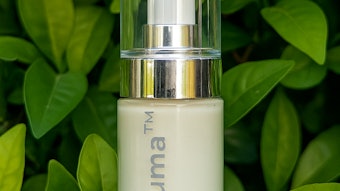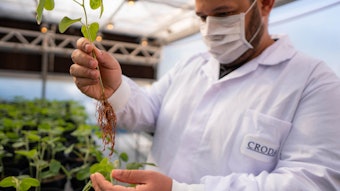- Human stem cells that can differentiate into cells of more than one tissue type have strong implications for cosmetic uses and the beauty industry.
- There are major markets where regulations forbid the use of any human-derived materials, including human stem cells.
- Several raw material companies have come up with solutions to the challenges of incorporating human stem cells in their portfolios by exploiting plant stem cells.
- Challenges do not preclude advances in additional ingredients that interact or work with human stem cells and that could have an immediate impact on the beauty industry.
- Fostered responsibly, stem cell technology-based cosmeceuticals will grow to be a lasting, long-term trend.
Recent reports from Mintel, Datamonitor and others predict that demand for antiaging cosmeceuticals will continue to be buoyant, despite these recessionary times. The million dollar question on everyone’s mind, regardless of whether they are approaching the segment from the marketing or R&D side of the equation, is: “What will be next big trend in cosmeceuticals?” To answer the question, one has to read and analyze the tea leaves—taking a very in-depth view of the key factors that both directly and indirectly have a profound impact on trends within the segment. These factors include: public awareness and perception often influenced by media outlets, R&D’s work in new product development and technology-led innovation, and ingredient innovations sparked by new raw materials and raw material breakthroughs.
Public awareness and perception are the linchpins in the success of an emerging trend or product. If these factors are positive, then chances of a product’s success are greatly enhanced. Media coverage plays a very vital part—bringing awareness but also coloring perception.
Trend analysis that includes market surveys, opinion polls, sales data and so on, in addition to simply indicating the latest trends, both informs and influences media coverage that impacts awareness and perception, and also often points the way to new opportunities for both marketing and R&D. This trickle-down effect allows the re-application of successful and innovative concepts from related markets—food and heath supplements, for example—to the other end of the application spectrum, such as skin care. This is also where the impact of ingredient and technology-led innovation on trends is clear. If an ingredient or technology has been successful in related fields, awareness and perception have already been addressed and new, transferred success is closer at hand. There is a wealth of data and previous endeavors that demonstrate that success in areas loosely related to beauty cascades down to the beauty industry, and cosmeceuticals specifically.
This is also true for “new” raw materials, or new and innovative applications of existing materials for use in beauty products, and these, too, can greatly influence creation or proliferation of a trend. The efficacy of raw materials already demonstrated in areas such as health and nutrition are both valuable in supporting and building a successful beauty trend, leveraging previous success and acceptance, and can help create new trends.
With all of these complex factors influencing the final marketing decision to invest in a launch of a new product, it takes very brave individuals to predict and bank on a trend and persuade their organizations to launch a product based on it. However, sometimes all the diverse factors outlined may converge in such a manner that the answers are glaringly obvious. This seems to clearly be the case with stem cells.
Stem Cell News
Ethical debate regarding the use of human stem cells has received a great deal of coverage in the last few years. In the U.S., the country’s previous administration took a very orthodox stand against the use of human stem cells in medical research. This stance was reversed by the current administration. In the U.K., the government, after a serious evaluation of the issues, also reviewed and released new guidelines supporting medical research. And this trend for policy change on human stem cells also holds good for several other countries.
And as these changes take place, researchers and scientists are capturing headlines that are fostering the public’s curiosity in the potential—much of which has cosmetic implications. In March 2009, the U.K.’s The Sunday Times featured the headline: “Stem Cells to Grow Bigger Breasts.” The story outlined the clinical trials being carried out at Princess Grace hospital in London by a consultant breast surgeon. The paper also featured a front-page report on the Shanghai Institute of Cell Biology scientists’ studies on the potential of pig pluripotent stem cells to modify the animal’s immune-related genes and make its organs more compatible to the human immune system, thus creating an application for the use of these pigs as organ donors in humans.
Synergy in Research; Challenges for Beauty
An enormous amount of medical research on stem cells is being carried out, and new and potential applications and breakthroughs in the use of stem cells are being frequently reported—as illustrated by the noted The Sunday Times’ reports. And companies globally are ramping up research and stem cell collection centers as governments’ rethinking and growing public perception adds fuel for the momentum. In many cases, too, research is being conducted in collaboration across diverse but related fields. Mesenchymal stem cells, which can differentiate into cells of more than one tissue type, touch fields interested, for example, in soft tissue reconstruction (noted in The Sunday Times’ headline), in wound healing and related fields of skin therapy—with strong implications for cosmetic uses and the beauty industry.
These gains in the research and acceptance of stem cells affords the beauty industry a great opportunity. Medical research, by its nature, is time-consuming and costly—and slow to market time is the norm. Beauty products, on the other hand, can reach market quickly—although the task is not as simple with human stem cells as with other technologies and ingredients the beauty industry has leveraged. There are some important and challenging regulatory issues to navigate before efforts to finished products with human stem cell can even be developed. In fact, strict regulations forbid the use of any human-derived materials, including human stem cells, in cosmetics in the European Union, the U.S. and, more recently, Korea. This means that the beauty industry has been, as a whole, sitting on the sidelines and watching the developments with a mix of interest and frustration.
The beauty industry, however, with its usual flair for creativity, has come up with various ways to participate in stem cell innovation despite the challenges—namely, plant stem cells.
Stem Cell Related Raw Materials
In the past two years, several raw material companies have come up with solutions to the challenges of incorporating human stem cells in their portfolios while sidestepping controversy by exploiting plant stem cells.
Fred Zuli and his team of collaborators at the very innovative Swiss company Mibelle Biochemistry have developed a concept that uses a natural raw material, PhytoCell Malus Domestica, derived from “uttwiler spatlauber”—Apple extract that stimulates epidermal stem cells. In vitro efficacy studies are impressive, demonstrating that 0.1% extract stimulated the proliferation of human stem cells by 80%. Studies on human volunteers using a cream with 2% extract show a reduction in wrinkle depth from 8–15%.
The Italian firm Institute for Biotechnological Research (IBR), too, has had success with plant stem cells, launching an antiaging ingredient based on edelweiss (Leontopodium alpinum) stem cells. IBR claims the extract has strong antioxidant properties, and that it also has strong anti-collanenase and hyalauronidase activity, which helps to limit degradation of important macromolecules in skin.
It is important to note, too, that the successes with plant stem cells and the challenges to cosmetic use of human stem cells face do not preclude advances in additional ingredients that interact or work with human stem cells and that could transfer to cosmetic uses and have an immediate impact on the beauty industry.
Romuald Vallee and Pierre-Yves Morvan of French-based CODIF International have developed a culture of human epidermal stem cells that they found has applications for their raw material Phytcojuvenine. In vitro results indicate that it stimulates and increases the number of human epidermal stem cells, and is able to restore the adult epidermal stem cells’ ability to divide and migrate. Further, Regeron, a Korean company, introduced nature-identical human growth hormones (NL-hGH) derived by microbial fermentation. The company claims that NL-hGH strengthens stem cell character of the epidermal basal layer cells, i.e. awakens skin cells. The claims include antiwrinkle, anti-acne, skin-whitening and hair growth benefits when incorporated in suitable formulations.
Finished Cosmetics
In the past few years, a large number of cosmetics based on the stem cell concept have made it to market. The main claim is to simulate and protect the epidermal stem cells from oxidative and UV stress.
Skin care brand Amatokyn launched in 2007 with great publicity and hype for its raw materials developed in Russia, and ReVive launched Peau Magnifique—with a price tag of $1,500 and claims that its actives convert resting adult stem cells to the state of newly created cells to provide a firmer, more defined appearance.
Christian Dior was one of the first well-known prestige brands to embrace the concept of stem cells when it launched Capture R60\80 with the claim that it promotes the self-renewal capacity of skin and includes ingredients that protect the adult stem cells. And L’Oréal’s Lancôme brand launched Absolute Precious Cells in September 2009, claiming that it “helps restore the potential of stem cells and bring back the skin of youth.” (At the time that this feature was written, it was reported that the launch would be accompanied by interesting supporting research data.)
Apart from Lancôme, no other major multinational cosmetic companies have, so far, launched products with stem cell claims—though there are, in addition to those mentioned above, a host of smaller brands offering products with benefit claims based on stem cells.
The relative lack of activity from the major brands does not mean, however, that they are not interested in the concept and the marketing benefits of launching such a product, but they are keeping their powder dry for the right moment. It is much more likely that their decisions will depend on when the critical mass is reached in terms of an R&D breakthrough, the regulatory climate and marketing timing.
And this caution, particularly in the case of stem cells, is well-founded. At the present time, the public has a very mixed perception of benefits and risks of stem cells. On the whole, it is very positive, and there is a growing segment of the public that clearly believes in the potential of stem cells toward providing serious therapeutic benefits. And even as ethical and safety concerns are expressed, there are very few who question the extraordinary potential of stem cell applications.
The key for commercial acceptance: responsible introduction of stem cell protection or proliferation technology by the beauty industry in tandem with unstoppable advances by medical science in this field. Exaggerated beauty benefit claims or over-promise for short-term gains will be counter productive and only help inflame any negative public opinion—so care needs to be taken as more widespread stem cell technologies, ingredients and products move closer to being brought to market.
Finally, one thing is certain in the mid- to long-term introduction of stem cell technology: Launches and advances will continue to generate great publicity. This will help to attract even greater public interest and funds to benefit medical and cosmeceutical research, and stem cell technology-based cosmeceuticals will grow to be a lasting, long-term trend.
Aran Puri, Phd is the president of Cosmeceutical Solutions, a global consultancy specializing in cosmeceuticals. Puri has 35 years of beauty industry experience in senior level R&D positions. He is a renowned for his pioneering work with naturals, peptides and in anhydrous cosmeceuticals. [email protected]










